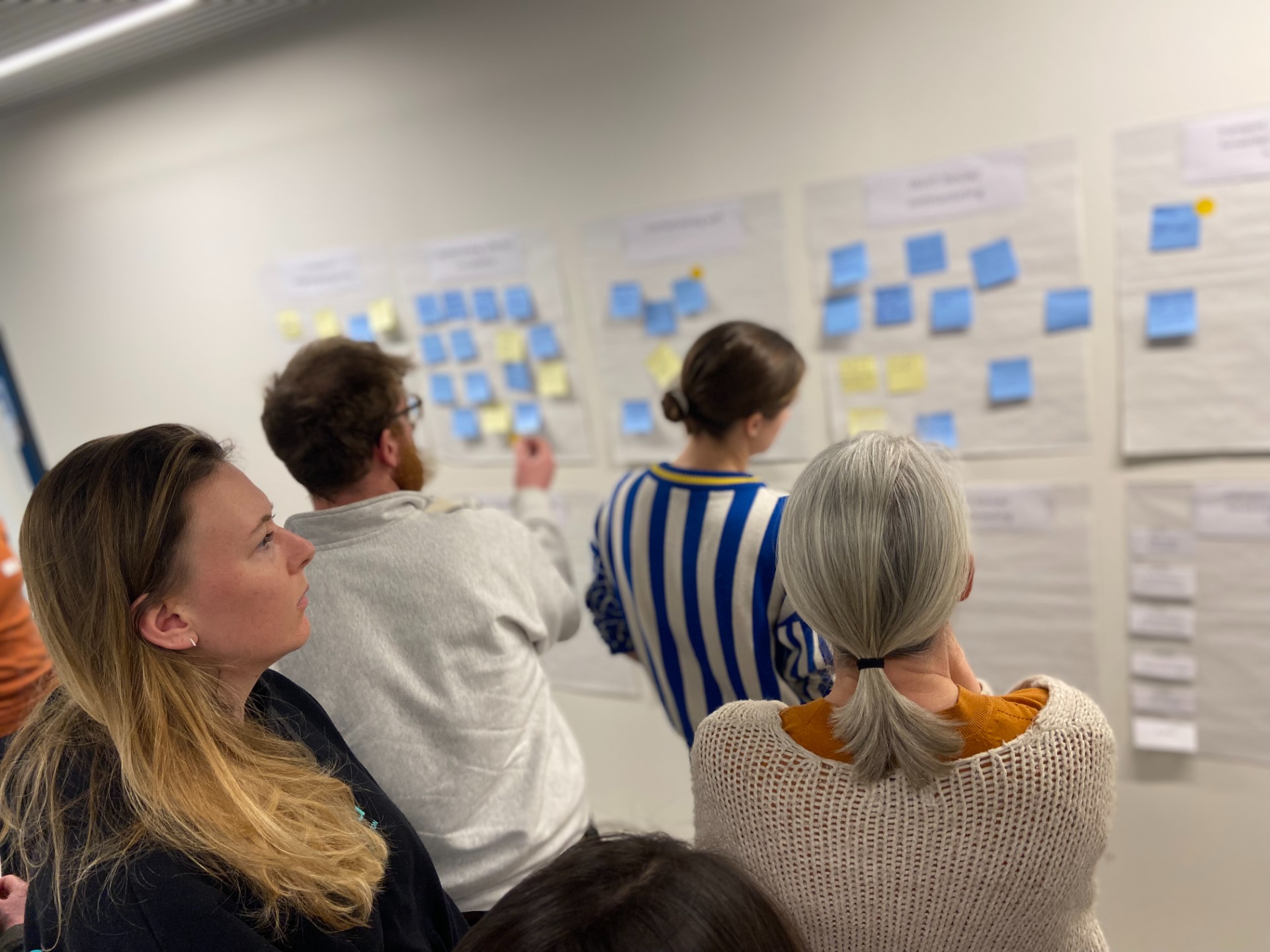Workshops answer issues of reuse
Driven by changing regulations and acute material shortages, the number of building projects using reclaimed elements has increased in recent years. However, building with reclaimed materials is far from being common practice: according to Embuild figures, only 1% of reusable building elements are effectively reused today in North-West Europe, and 99% are thus recycled or thrown away. That is why the organisation is currently drafting practical guides together with Buildwise to guide construction companies in reusing building materials. To receive good input for those guides, Embuild and Buildwise organised two workshops on materials reuse in March and April. Some insights from those workshops already give a hint of what you will read in the guides. Charlotte Cambier, project coordinator for circular & energy-efficient building at Embuild, summarises them for Circubuild in this article.
In Northwest Europe only 1% of building elements are reused after an initial application while technically an immensely higher proportion of building elements are reusable. This results in a large environmental impact and a net loss of economic value. To do something about this - to increase the amount of reclaimed building elements in Northwestern Europe, in other words - the European Interreg project Facilitating the circulation of reclaimed building elements in Northwestern Europe, FCRBE for short, was launched in 2018.


In recent years, the project, with Buildwise, Embuild, Rotor and Leefmilieu Brussel as partners in Belgium, has already yielded a series of tools. These include the guide to procurement strategies, aimed at project owners and designers in the context of public procurement, which explains the different steps to enable reuse. There is also the guide to drawing up a reuse inventory and the 36 material sheets that explain how specific building materials or products can be reused.
The tools developed so far focus mainly on designers and building owners. In a next stage, the FCRBE project partners also want to focus on construction companies, of which there are thousands in Belgium alone. Indeed, despite the clear benefits of recovering and reusing building materials, there is still a lack in knowledge and barriers associated with these practices for construction companies. More concretely, FCRBE partners Embuild and Buildwise are preparing practical guides for the following contractor professions: general contracting, demolition contracting, infrastructure works, finishing, carpentry and roofing.
Because, even after all these years of research, there are still open questions about how collaborations can promote reuse and who has what liabilities in a project involving reuse, Buildwise and Embuild organised two workshops on the subject; on 14 March and 18 April, several professionals from the construction sector were brought together to think about and debate the issues. In between, several doers were then given the floor to further fuel the debate. For example, Franck explained his method of recovering bricks and the project partners of ISOL'ution explained how to give insulation materials a second life.
What we can take away from these two workshops:
> there is a need for more systematic collaboration: reusing materials requires more collaboration between construction partners, but today these collaborations still happen very ad hoc. By involving the contractor earlier in the construction process, he can assist designers and owners in identifying and listing reusable materials and in planning the dismantling, stockpiling and effective reuse of the materials;
> help exemplary projects to change the (negative) perception that recovered materials still often have. Indeed, these can show that for certain materials, the risks are small and not every material needs to be retested or certified;
> shared responsibility and liability for technical performance: it became clear that there is shared responsibility in the application of recovered materials. External control agencies or labs can provide relief in case of excessive uncertainty about performance;
> new roles in the reuse chain: larger (regional) material hubs were put forward as catalysts for matching supply and demand of recyclable materials. Today, the storage of materials is a major barrier to reuse - a lot of space is needed, storing for more than 6 months is unrealistic and who should organise the logistics? Such larger material hubs, with in-house expertise, could also help with traceability and quality control of the materials;
> it largely depends on the builder, public or private, whether reuse of materials is chosen, as reuse usually entails an initial additional cost - because the chain is still evolving. But contractors and architects certainly have a role to play as well. They can promote reusable materials to building owners by highlighting the environmental benefits. That can increase demand for recycled materials and create a market for them.
More insights and answers will thus be found in the six practical guides published by Buildwise and Embuild in October 2023.
Follow the FCRBE project via this website or the project's LinkedIn page.
